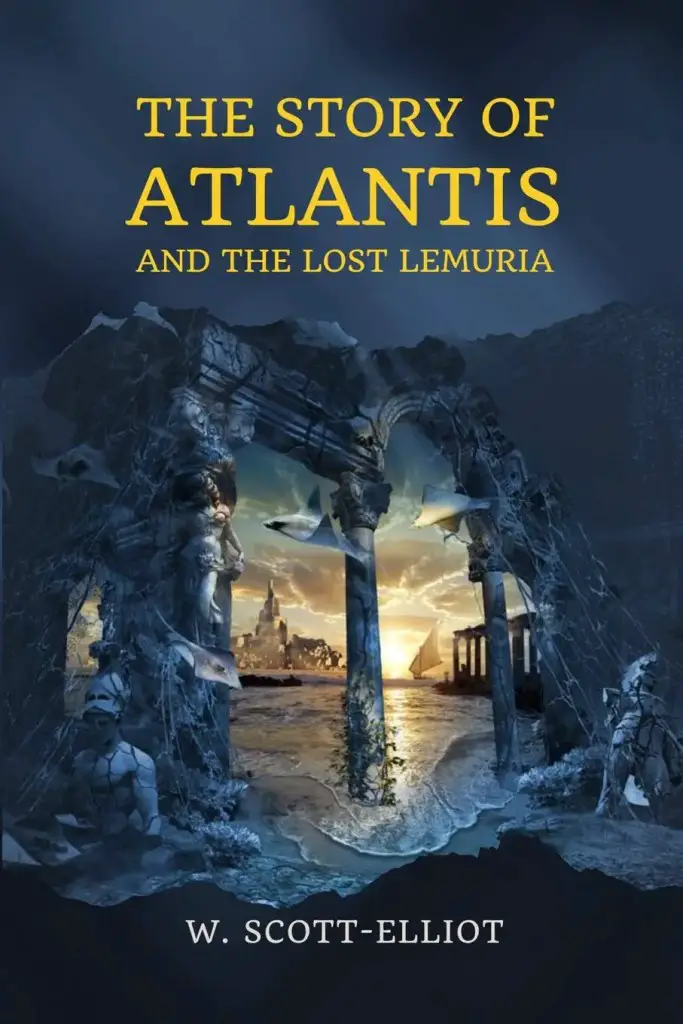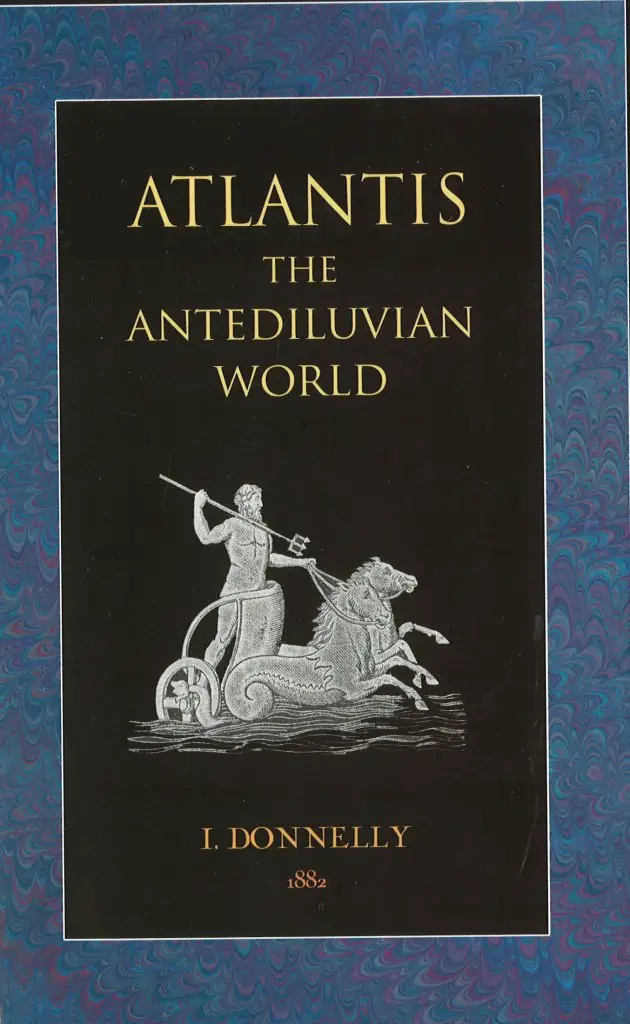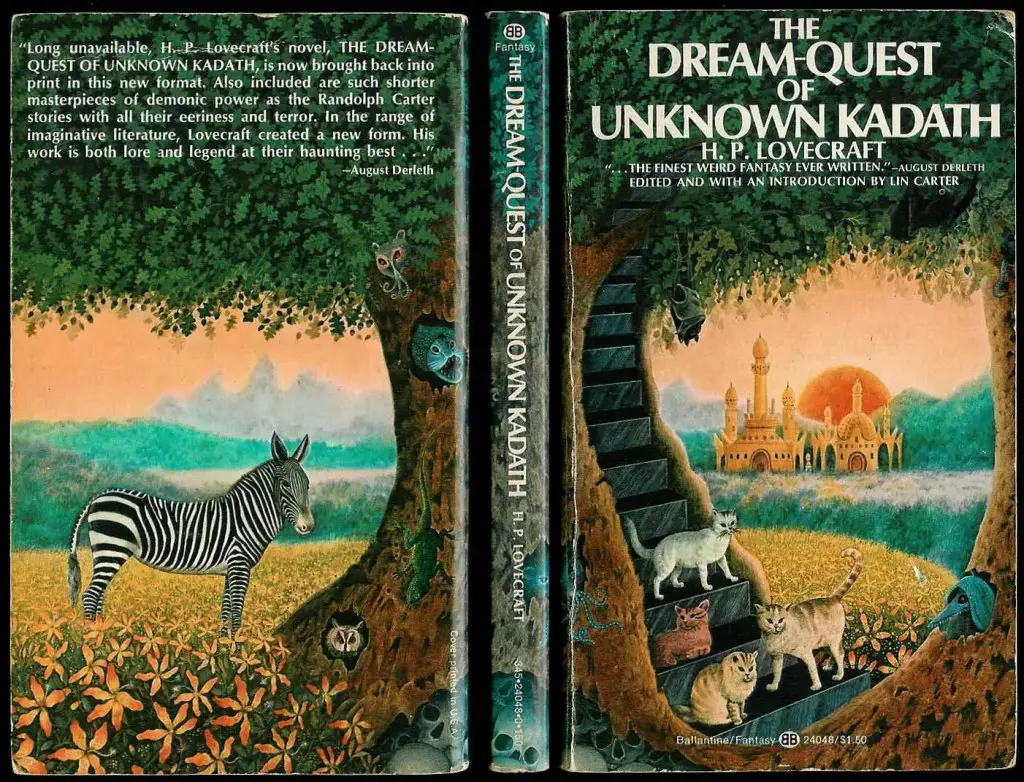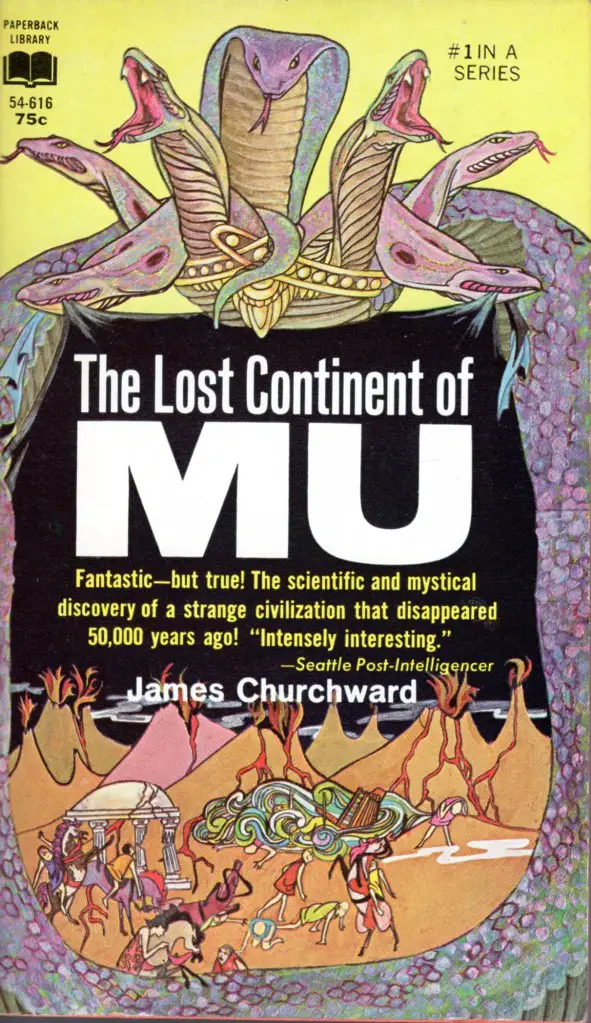One of the things that most strike the reader who is familiar with the themes of esotericism is the large amount of traditional elements in Lovecraft's stories, which is very strange when one takes into account that he defined himself as a convinced advocate of mechanism and materialism. . These concepts, including that of the so-called "lost continents", did not come to him through authentically traditional sources, but through the cogitations and narratives of the theosophists of the late nineteenth century, which also inspired some colleagues of the Providence Dreamer, such as Clark Ashton Smith and Robert E. Howard.
di Miranda Gurzo
Over the decades, following the death of HP Lovecraft, studies on his work have multiplied. Thanks above all to the monumental efforts of ST Joshi we know almost everything there is to know about the literary genesis of the so-called tales Myths of Cthulhu. The influence of authors who somehow approached the cosmic horror narrative before Lovecraft has been elucidated in a complete and exhaustive way. So, for example, we know that from Lord Dunsany Lovecraft came up with the idea of creating a pantheon that it reflected his ideas about the mighty and titanic forces that move the Cosmos; from Chambers and from his King in Yellow the idea that these forces have agents infiltrating the human race, and that contact with them is a harbinger of death or madness, while Do came the concept that, once the veil of reality has been lifted, beyond it one can mainly see Horror.
However, there are several less known, or rather less evident aspects that literary criticism has never properly investigated: one of the things that most strike the reader who is familiar with the themes of esotericism is the large amount of traditional elements in the stories of Lovecraft, which is very strange if we take into account that he defined himself as a convinced advocate of mechanism and materialism. However, these concepts did not come to him through authentically traditional sources, but through the cogitations and narratives of the theosophists of the late nineteenth century. It should be noted that Lovecraft was not an exception: the members of his literary circle exchanged texts and pamphlets on theosophical subject to give new life to their inspiration. Suffice it to mention Clark ashton smith e Robert E. Howard, who wrote much of their fiction inspired by fables lost continents so dear to the Theosophists, the former being inspired by the Esoteric Buddhism of Percy Sinnett, the second to the brochures of the Oriental Library Clinic, which often contained theosophical material.

The text that most influenced Lovecraft's creations, and the only one of its kind that Lovecraft has read, was The Story of Atlantis and Lost Lemuria by William Scott Elliot, dated 1896. The volume claims to narrate the history of the two continents that have disappeared from the theosophical point of view, complete with accurate descriptions of their monstrous inhabitants. The fervent theosophical reveries fueled Lovecraft's creativity, pushing him to shape his personal mythology, populated by monstrous Gods from outer space in primordial times, cosmic cities guardians of terrifying secrets and forbidden mountains where terrifying entities alike:
“I am assimilating something of great interest as a background or source, which has belatedly introduced me to a mythic cycle with which I have reason to believe you are particularly familiar, namely the legends of Atlantis and Lemuria, as developed by modern occultists and sophist charlatans. Actually, some of the insights into it the lost City of the Golden Gates and the shapeless monsters of archaic Lemuria they are ineffably full of fantastic suggestion ",
Lovecraft wrote in his letter to Smith on 17/06/26 about reading Scott Elliot's book. Lovecraft fully exploited, in the following years, all these suggestions, imagining that in the course of millions and millions of years this planet has been dominated by species other than the human one, which would be relatively recent. It goes like this from the Great Race de The Shadow out of time, to Mi-Go from Pluto in The one who whispered in the darkness, to the Ancient Beings from the space of To the mountains of Madness, who in addition to being the creators of the shoggoths, so similar to the "shapeless monsters of the archaic Lemuria", it is revealed to us, are also the creators, by chance or for pleasure, of the same human beings, thus anticipating the theories of paleoastronautics.
From a letter to Smith dated 29/11/30 we learn that "Scott Elliot's book was loaned to me by W. Paul Cook". William Paul Cook (1881/1948), passionate about editorial journalism like Lovecraft himself, in addition to lending him numerous books, persuaded him in 1917 to resume his literary efforts after a hiatus of nine years. It is therefore also thanks to him that Lovecraft became that titan of fantastic literature that the world knows today, and without fear of denial we can also say that without the serendipitous borrowing of the book by Scott Elliot perhaps Lovecraft's creativity would have taken different paths and, perhaps, we would not even have the myths of Cthulhu as we know them today.

The Kadath like Axis of the world
One of the most striking parallels between Lovecraftian fiction and traditional esoteric doctrines is the concept of the Axis of the World, the metaphysical place from which the whole universe originates and around which the universe itself revolves. In ancient cultures theAxis of the world is represented by a mountain or a hill: Olympus for the Greeks, Mount Meru according to the Indian Vedas, Mount Zion for the Jews, the Qaf for Muslims. According to the Egyptian theology of Hermopoli and Heliopolis, the god Atum created the universe from a hill that emerged from the primordial waters, and the same concept appears in many other mythologies. The Sacred Mountain is always placed in the extreme north and this connects it to one polar symbology, since the pole itself constitutes the Center of the celestial vault. The Sacred Mountain is the pivot around which the world rotates, just as the vault of the sky rotates around the Pole.
All these concepts are beautifully represented by the Mount Kadath which Lovecraft wrote about in the novel The Dream Quest of the Unknown Kadath. Its colossal bulk rises in the center of the Frozen Desert in the far north of the Dreamlands, where eternal night reigns. It is crowned by a titanic Onyx Castle whose summit, the Lighthouse of the Ancients, glows with a sinister glow in the eternal night, just as the summit of Mount Meru glows with light. It touches the sidereal void and is crowned by a diadem of stars unknown to men. As in the Ancient traditions it is populated by divinities, the Gods of the Earth, who far from being the true masters of the world are but puppets dominated by the Other Gods and by the Creeping Chaos Nyarlathotep. With this, Lovecraft clearly distances himself from tradition, stating that on the apparently wise and stable laws that govern the world he rules nothing but Chaos.
In a letter of early March 1933 to Clark Ashton Smith, Lovecraft again mentions Atlantis and the Lost Lemuria by WS Elliot, also outlining a brief summary of the esoteric history of the continents according to the text in question. The reference to Mount Meru, the Primordial Mountain which is a symbolic representation of the World Axis, located at the North Pole according to the Hindu and Vedic tradition, is relevant in the letter in question; relevant because in The Dream Quest of the Unknown Kadath (from 1927 and therefore written after reading the book) as we well know the goal of Randolph Carter's dream pilgrimage it is Mount Kadath which, like Meru, is a titanic mountain located in the extreme north.

Shamballah, navel of the world
It is evident that Elliot's book was a seminal text for Lovecraft's creativity, who had already drawn inspiration from it to write an equally seminal story: The Call of Cthulhu. In this fundamental story we find, in the opening words, an explicit reference to theosophy and its beliefs about it the cosmic cycles and the survival of very ancient entities that in a very remote past populated continents that have now disappeared. In the story the book of WS Elliot is explicitly mentioned, while among the signs of the re-emergence of R'lyeh a "colony of theosophists who had worn a white tunic en masse to prepare for the usual 'glorious date' that never comes" is cited.
The theme of land sunk in the waves it is explicit in The Call of Cthulhu, since the portion of the necropolis of R'lyeh that emerges from the ocean in the story is clearly only a small strip of a much wider land which, as Lovecraft himself later specified, in At the mountains of madness, had risen from the waters shortly after the moon had detached from the earth, a reference, the latter, to theory still debated today on whether our natural satellite could be derived from the collision of our planet with another astronomical object. If the kingdom of Cthulhu was located in a vanished continent of the Pacific, such as Mu or Theosophical Lemuria, it is also true that R'lyeh, the ultratelluric "corpse city", as the seat of the monstrous divinity from the stars, corresponds to the traditional archetype of the Center of the World, which filtered into the Lovecraftian narrative through the theosophical myth of Shamballah.
That of Shamballah, capital city of the occult kingdom of Agharti, which some regard as a underground realm, is one of the theosophical concepts that most seem to have inspired Lovecraft, who closed the letter to Smith of early March 1933 citing the Sign of Shamballah, while in the letter of 15/03/1933 he confided to him that he was
“Very curious about this sacred city of Shamballah, which is said to be inviolate in Gobi desert; it is thought to have been built by the Lemurians or third Root-Race several million years ago… Shamballah would make a beautiful narrative theme. I wonder if any theosophists or Hindus claim to have visited it ”.

Despite the postponed theosophical elaborations, that of Shamballah is an authentic concept that reverberates the archetype of the supreme initiatory Center, just as Mount Meru, inspirer of the Kadath, is attributable to the archetype of theAxis of the world. The archetype of the sacred city will have a formidable impact on Lovecraft, who will naturally reverse the positive value of the Center turning it into a seat of the antihuman cosmic forces on earth. HPL will first use it to model the monstrous fortress of R'lyeh in The Call of Cthulhu and will resume it at a later time. For example, the city of Yian-ho, "evil relic of the Leng plateau", which Lovecraft first mentions in The Diary of Alonzo Typer, can be traced back to the same source of inspiration; the same can be said of "City inside the magnetic poles" of The Dunwich Horror, which, as Wilbur Whateley writes in his diary, can be seen by repeating the "Formula of Dho-Hna".
In TheMound she is mentioned several times the city of Dho-Hna as the capital of the underground kingdom of K'n-yan, which suggests further elaboration of the concept presented in The Dunwich Horror, making the affinity with the theosophical legend of Shamballah even more appreciable, which is believed to be in an unknown underground realm. The Diary of Alonzo Typer, written by Lovecraft in 1936 commissioned by William Lumley (signed by it will be published in 1938 on Weird tales) is one of the stories that most underline the theosophical ancestry of Lovecraftian creations. In fact, the city of Shamballah and the Lords of the Flame from Venus who built it (and this is a concept of direct theosophical derivation) as well as the forbidden city of Yian-ho which dates back to the same archetype, that of the Center.
The story had a sequel signed by Robert M. Price, Entitled The Strange Fate of Alonzo Typer. Price, one of the finest Lovecraftian exegetes, chose to amplify the theosophical subtext of the original story by presenting the story as an account of the Reverend Edgar Dowling "famous for his Akashic readings in a trance ... providing remarkable glimpses of life in ancient Atlantis and Lemuria ". The Akashic theme, a sort of etheric archive of planetary and cosmic memory, accessible to individuals with clairvoyance, also goes back to theosophy. The story narrates the visions of Dowling, concerning the exploration of the cursed Yian-ho by the protagonist, who also mentions the city inside the magnetic poles (always attributable to the archetypal Center) cited by Wilbur Whateley in his diary in The Dunwich Horror.

The role of E. Hoffmann Price
In addition to "Shamballah, built by the Lemurians fifty million years ago, and still inviolate behind its walls of psychic strength in the eastern desert", in the same account we find a mention of the Book of Dzyan, which Lovecraft will also quote in his last story, The Dweller of the Dark. HP Blavatsky, the founder of the Theosophical Society, based her fundamental works Isis Unveiled e The Secret Doctrine on this text which, according to him, would be older than the solar system, even if the prevailing opinion of scholars is that it is a pseudo-biblium, like the Necronomicon Lovecraftian. Lovecraft's source regarding Shamballah and the Book of Dzyan it was second hand. Although he had repeatedly promised himself to read new theosophical material, HPL could not live up to his purpose, as the work of reviser occupied him for most of his time.
Fu Edgar Hoffman Price, which Lovecraft met during a trip to New Orleans in 1932 on the initiative of Robert E. Howard, to become Lovecraft's favored source for the acquisition of new notions on theosophical beliefs. In fact, we read in Lovecraft's letter to Smith dated 10/02/33 that
"Price unearthed another cycle of folklore involving a thing of supposed primeval origins called The Book of Dyzan (sic) which is supposed to contain all sorts of secrets about the Ancient World before the sinking of Kusha (Atlantis) and Shalmali (Lemuria). It is kept in the Sacred City of Shamballah, and is considered to be the oldest book in the world, having been written in Senzar language (ancestor of Sanskrit), which was brought to earth eighteen million years ago by the Lords of Venus. I don't know where E. Hoffmann got this stuff from, but it looks pretty damn good. I'll ask him to give us some details, although you may have come across this cycle before. It reminds me of Scott Elliot's stuff about theosophy ”.
The enthusiasm and curiosity expressed by Lovecraft towards the theosophical themes mentioned by Price also reverberate in his letter to the latter of 15/02/33:
”…the mythical cycle of Pushkara-Plaksha-Kusha-Shalmali-Mount Wern-Senzar-Dzyan-Shamballah that you have exhumed causes me a feverish interest; and I am tempted to overwhelm you with questions about the source, provenance, general aspects and bibliography of all these unknown legends… I am really interested in the Dzyan-Shamballah question. Its cosmic purpose, the Lords of Venus, and everything in between, resonates in a special and emphatic way in my strings! ”.
Price provided in his letter dated 18/02/33, in reply to his friend, a fairly detailed list of the sources of the mythical cycle of Shamballah, which included the Secret Doctrine of Blavatsky, la Inner Life by Leadbeater e The origin of man by Annie Besant. Lovecraft was apparently disappointed to discover that "that mystical and primordial stuff of Price ... was conventional theosophical material" (letter to Smith dated 21/02/33), however his interest in the myth of Shamballah did not fail, as he had the I suspect it originated from some obscure Hindu legend:
"... the theosophical mythical cycle is probably based on an ancient Indian heritage with certain additions from the 19th century"
(letter to Smith dated 15/03/33);“… There is probably a good deal of genuine tradition in the Theosophical heritage. One thing we can say about the Hindus is that their mythology is able to better grasp the transient and insignificant role of the earth ... I wonder if these legends can be compared to what the Colonel Churchward about the Himalayan priests and their annals in primeval language Naacal that tell of the submerged Mu ... obviously these traditions are very ancient among Hindus, and it would be interesting to find out how they arose ... they are in any case excellent narrative material! "
(letter to Smith dated 24/03/33).

Conclusions
From the amount of documentary material available, it is undeniable that theosophical doctrines exercised a fundamental influence on Lovecraft's literary production, just as they were an essential basis for the creation of his personal mythical cycle of the remote past of the earth. Although she stated that theosophical doctrine makes "my Cthulhu and Yog-Sothoth look pale and unconvincing" (letter to Barlow dated 9/4/33), we do not feel like sharing Lovecraft's clear and heavy judgment on his narrative. It is actually much more convincing and suggestive than any theosophical storytelling, precisely because Lovecraft, knowing the doctrines of Blavatsky and associates only superficially, has extrapolated its archetypal core and genuine reworking it in a personal key.
This is it persistence of traditional archetypes in Lovecraftian literature to have ensured, over time, an ever increasing number of readers of the works of the Providence Dreamer, since they, firmly rooted in the collective unconscious, cannot help but resonate to the most sensitive audience segment, just as they resounded in the unconscious Lovecraft when he came across it.
Bibliography:
Dawnward spire, lonely hill. The letters of HP Lovecraft and Clark Ashton Smith, VV 1-2 Hippocampus Press 2020
O Fortunate Floridian, Lovecraft's letters to RH BarlowUniversity of Tampa Press 2016
Renzo Giorgetti, Lovecraftian archetypes, Dagon Press 2009

2 comments on “HP Lovecraft, the "lost worlds" and Theosophy"